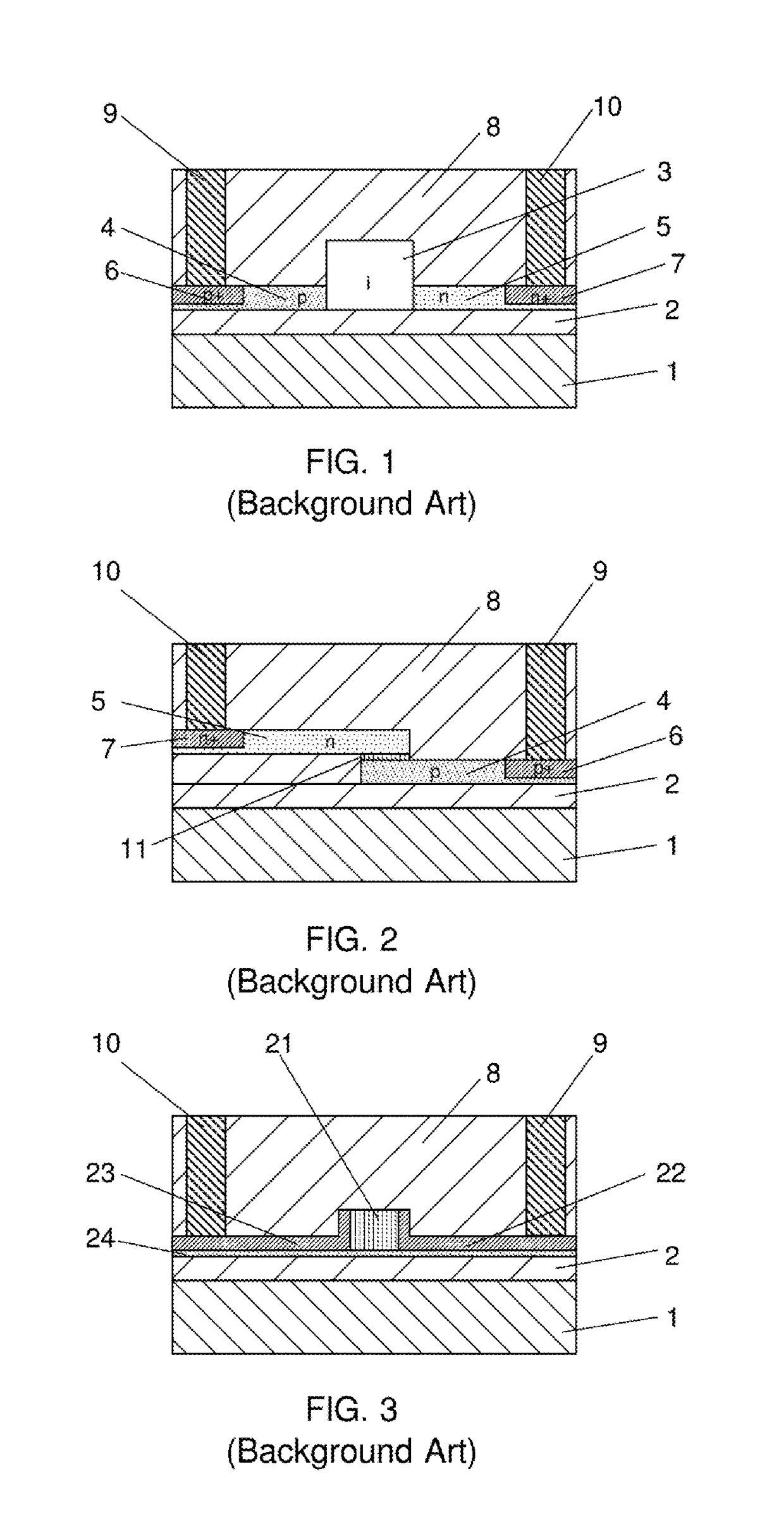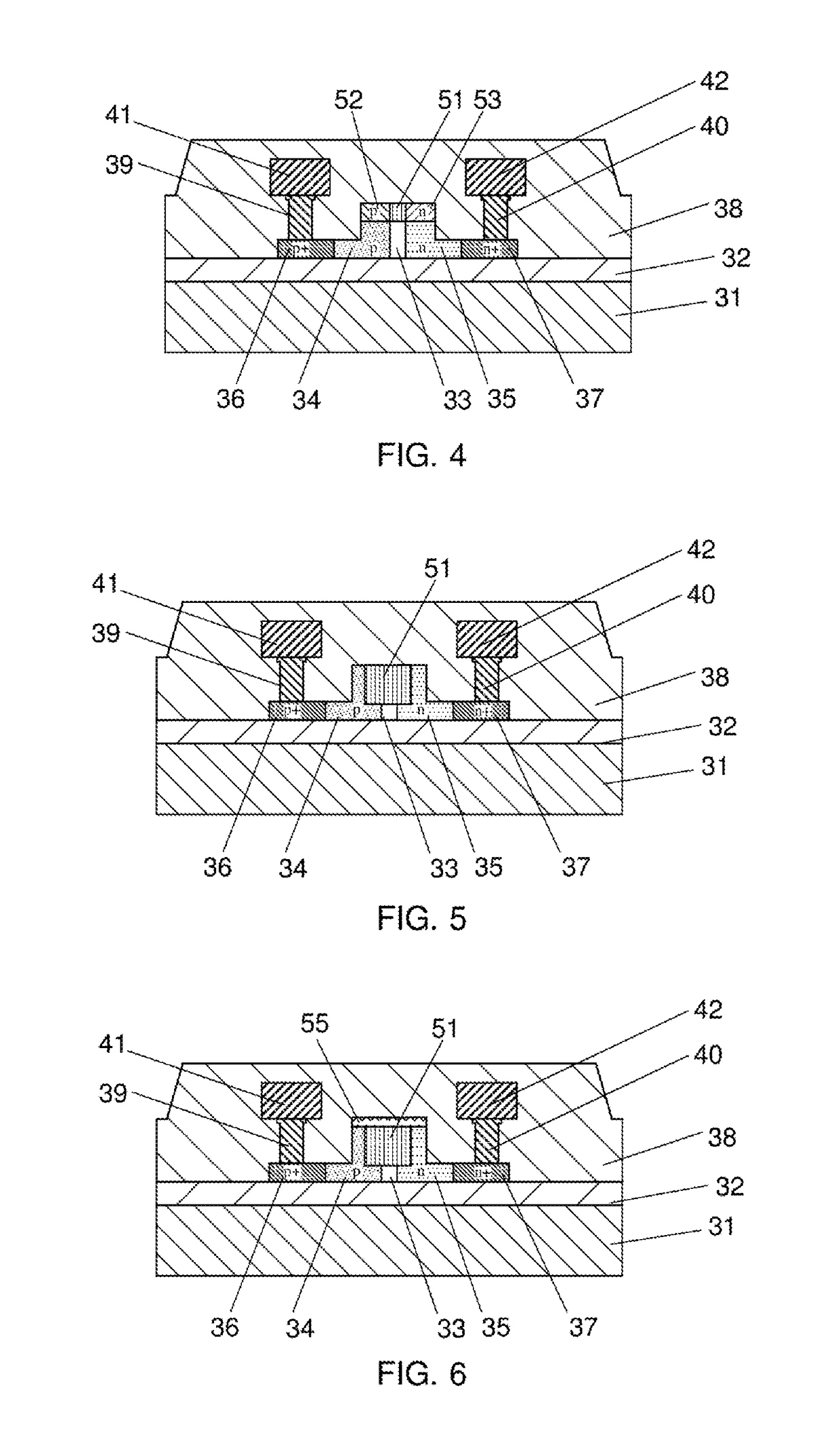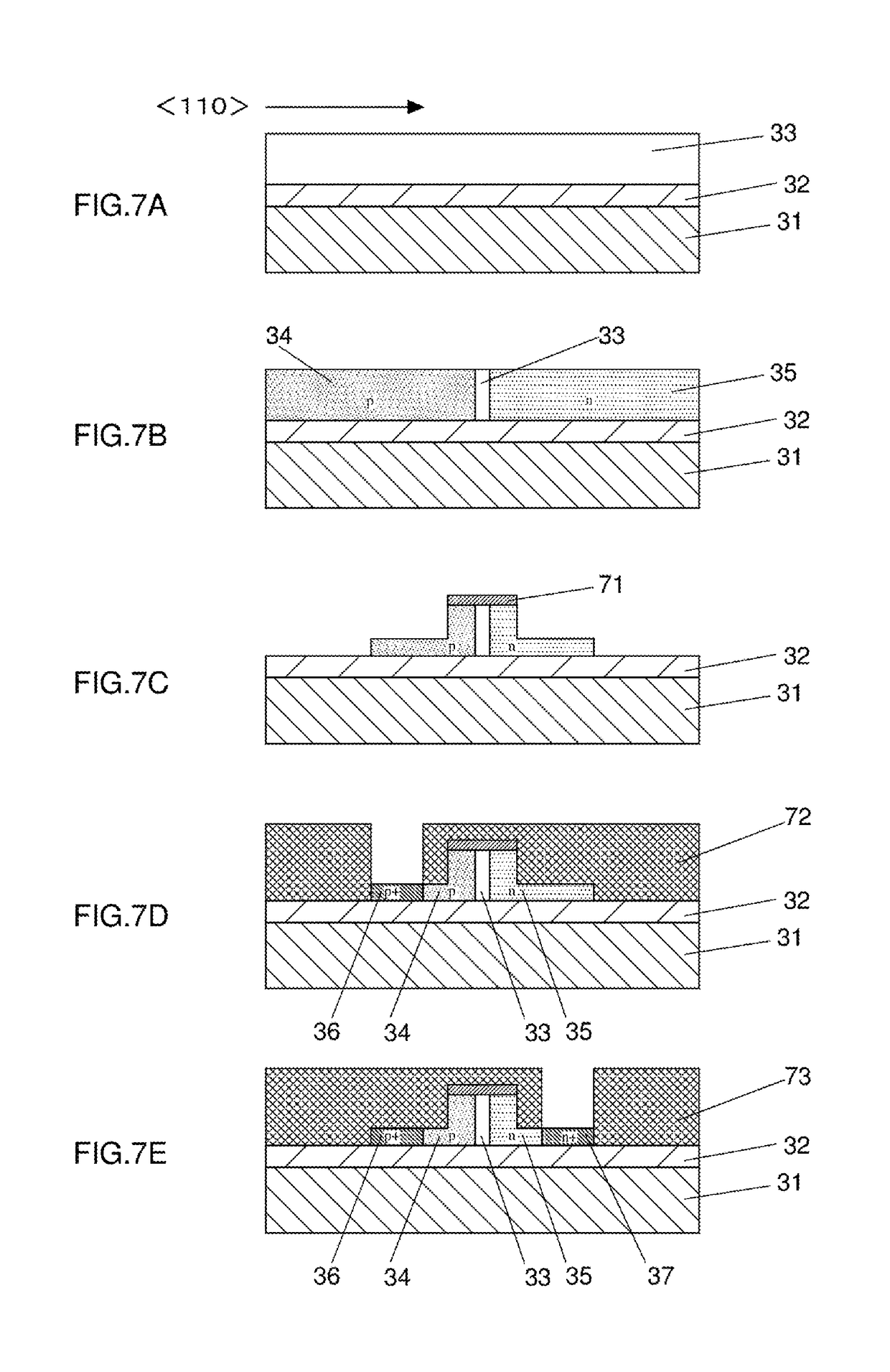Electroabsorption optical modulator
a technology of optical modulator and optical modulator, which is applied in the field of electroabsorption optical modulator, can solve the problems of limited use of such devices, low optical modulation efficiency of most such devices that have been studied to date, and limited speed of optical modulation operation, so as to reduce light absorption, improve modulation efficiency, and high-efficiency optical coupling
- Summary
- Abstract
- Description
- Claims
- Application Information
AI Technical Summary
Benefits of technology
Problems solved by technology
Method used
Image
Examples
Embodiment Construction
[0029]Hereinafter, the present invention will be described with example embodiments.
[0030]In an electro-optic modulator (electroabsorption optical modulator) according to the present example embodiment, as shown in FIG. 4, by forming first silicon (Si) layer 34 doped so as to exhibit a first type of conductivity (for example, p-type conductivity) and second silicon (Si) layer 35 doped so as to exhibit a second type of conductivity (for example, n-type conductivity), both being disposed parallel to support substrate 31 of an SOI substrate via buried oxide (BOX) layer 32 which constitutes a lower clad, stacking germanium-silicon (GeSi) layer 51 on the doped first and second Si layers, further subjecting the GeSi layer to p-type and n-type doping to form electrode layers 52 and 53, it is possible to reduce light absorption by the electrode layers. Note that support substrate 31 and BOX layer 32 may be simply collectively called a “substrate.”
[0031]In this case, third Si layer 33 made u...
PUM
| Property | Measurement | Unit |
|---|---|---|
| communication wavelengths | aaaaa | aaaaa |
| communication wavelengths | aaaaa | aaaaa |
| carrier density | aaaaa | aaaaa |
Abstract
Description
Claims
Application Information
 Login to View More
Login to View More - R&D
- Intellectual Property
- Life Sciences
- Materials
- Tech Scout
- Unparalleled Data Quality
- Higher Quality Content
- 60% Fewer Hallucinations
Browse by: Latest US Patents, China's latest patents, Technical Efficacy Thesaurus, Application Domain, Technology Topic, Popular Technical Reports.
© 2025 PatSnap. All rights reserved.Legal|Privacy policy|Modern Slavery Act Transparency Statement|Sitemap|About US| Contact US: help@patsnap.com



